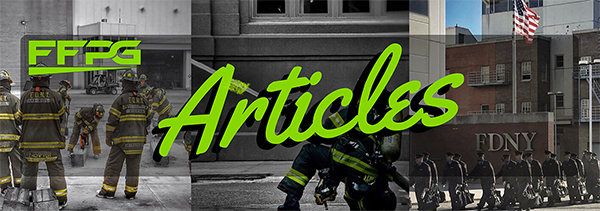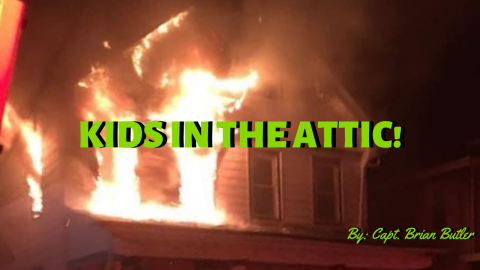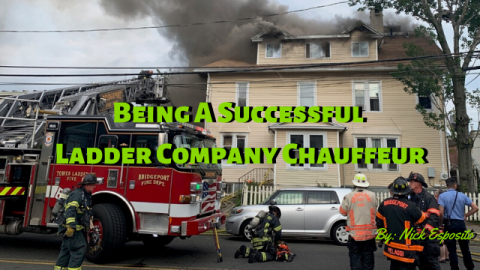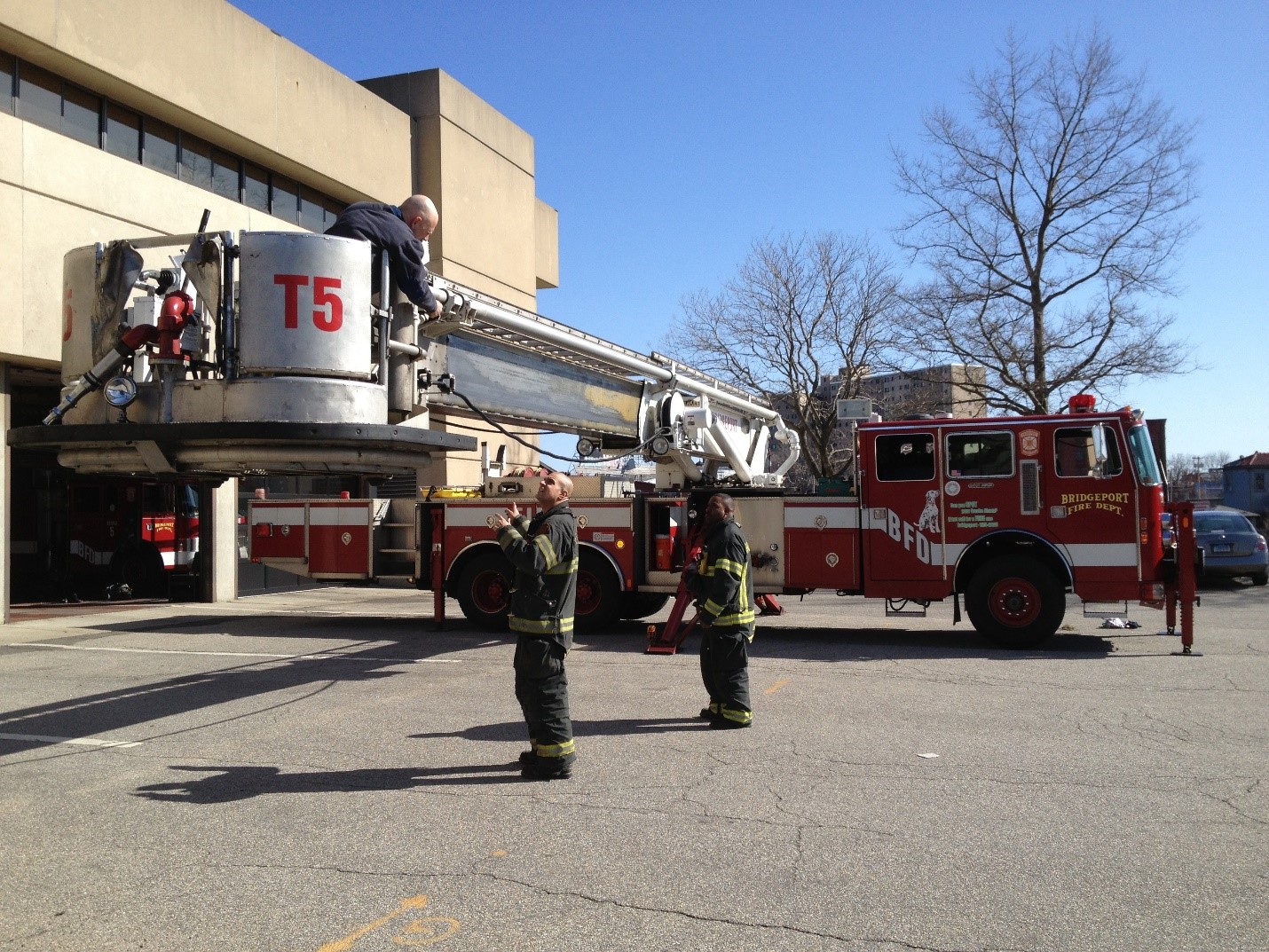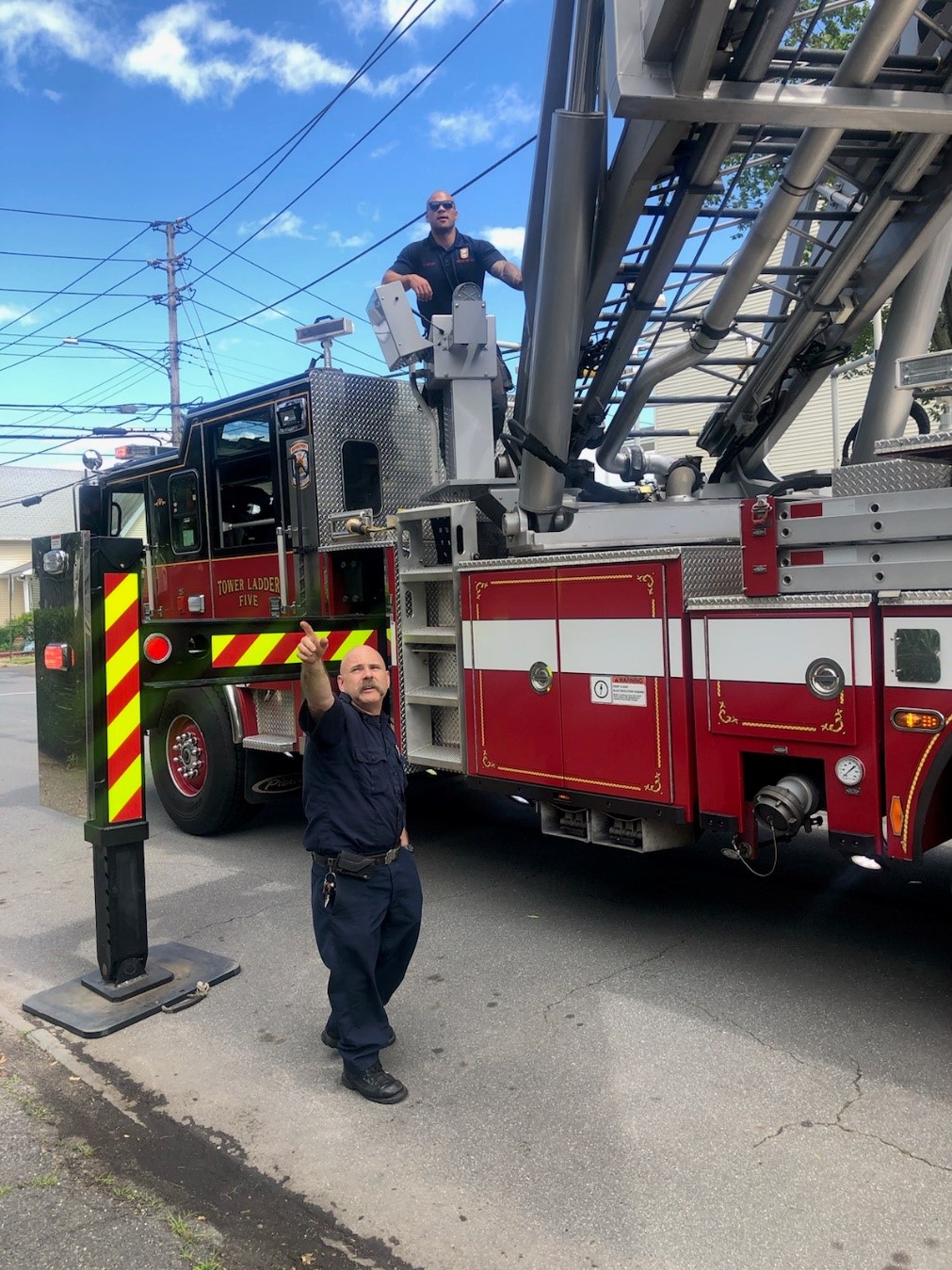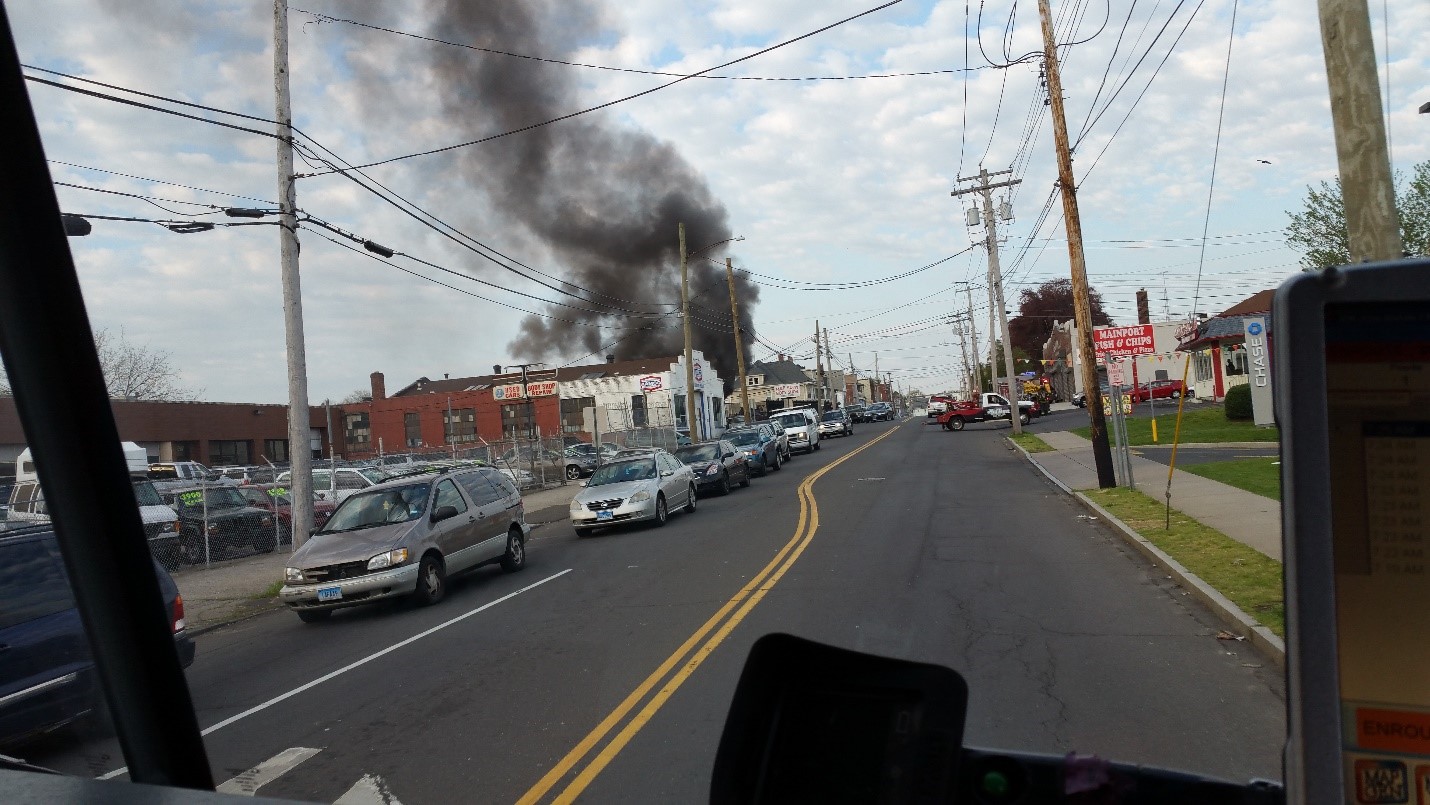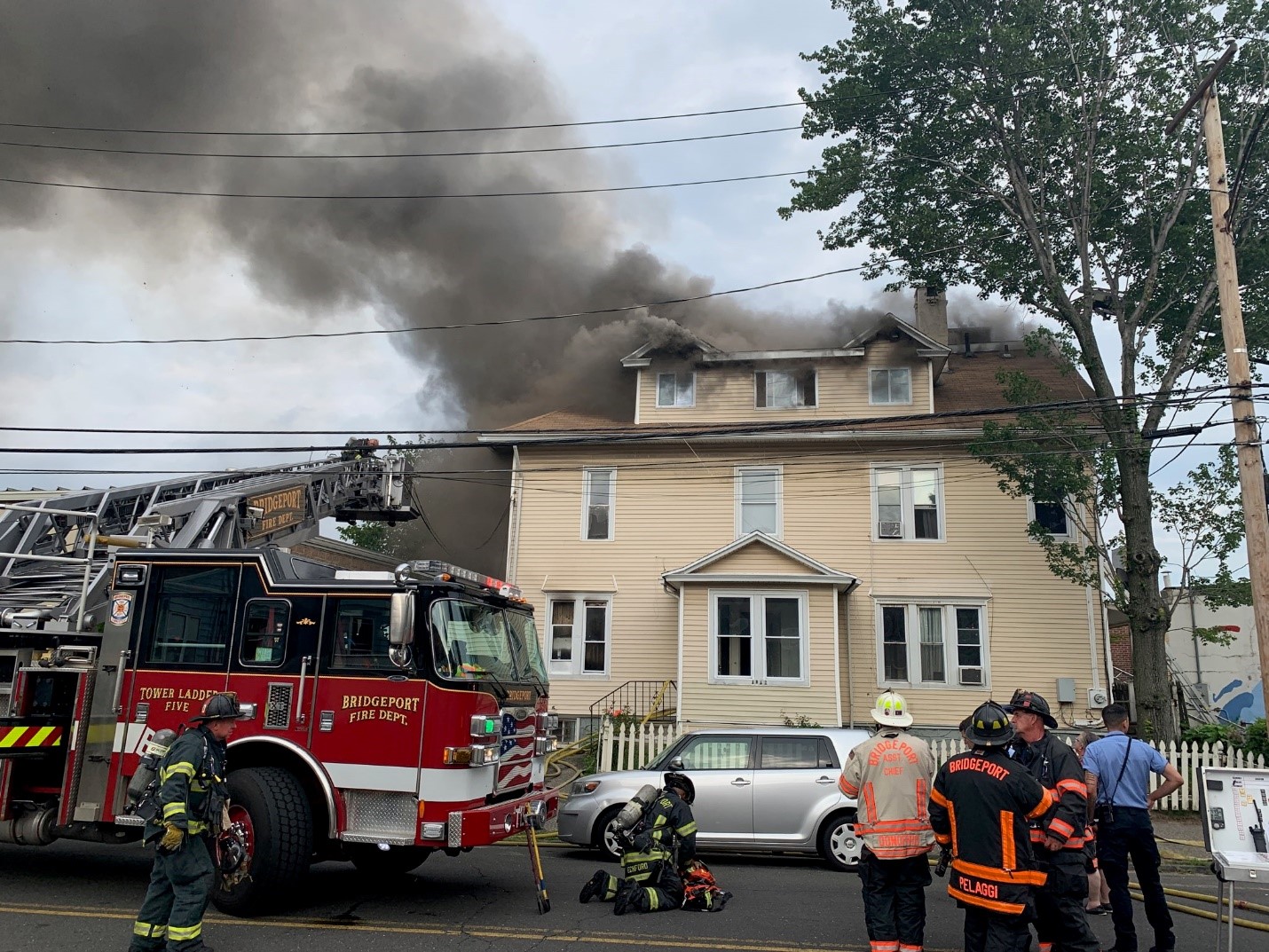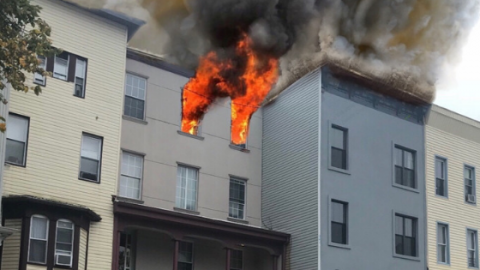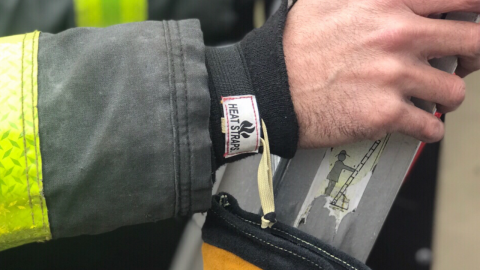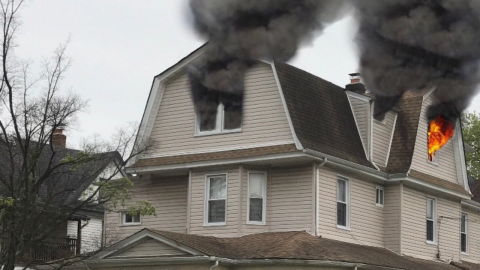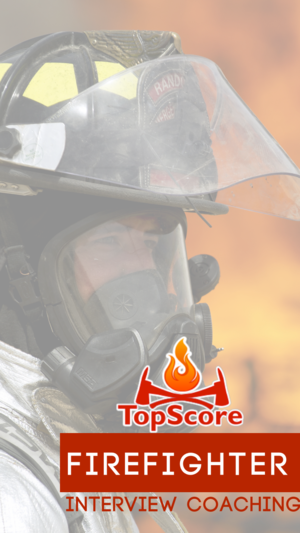The deadly half-story living space of a 2.5 wood frame private dwelling
Those working in areas with numerous 2.5 frames with interior stairs leading to the attic have all seen the living space above. These top floor living spaces are often bedrooms for kids, especially in urban areas. If there is a fire on the floor(s) below these rooms, they can be a death trap for anyone. Being above a fire is an extremely dangerous place to be, especially for kids.
Recognizing the 2.5 frame with fire below on-approach is extremely important, especially during sleeping hours when most fatal fires occur. On arrival, the “mind-triggers” registering with the crew should be automatic. Whether the fire is on the first floor to the second, the second to the attic, or all floors below, that half story should be treated as a priority. Looking through the windshield and seeing fire or smoke showing, you already know where it’s going. Now, assignments, size up, and coordination with the engine and truck must be instantaneous.
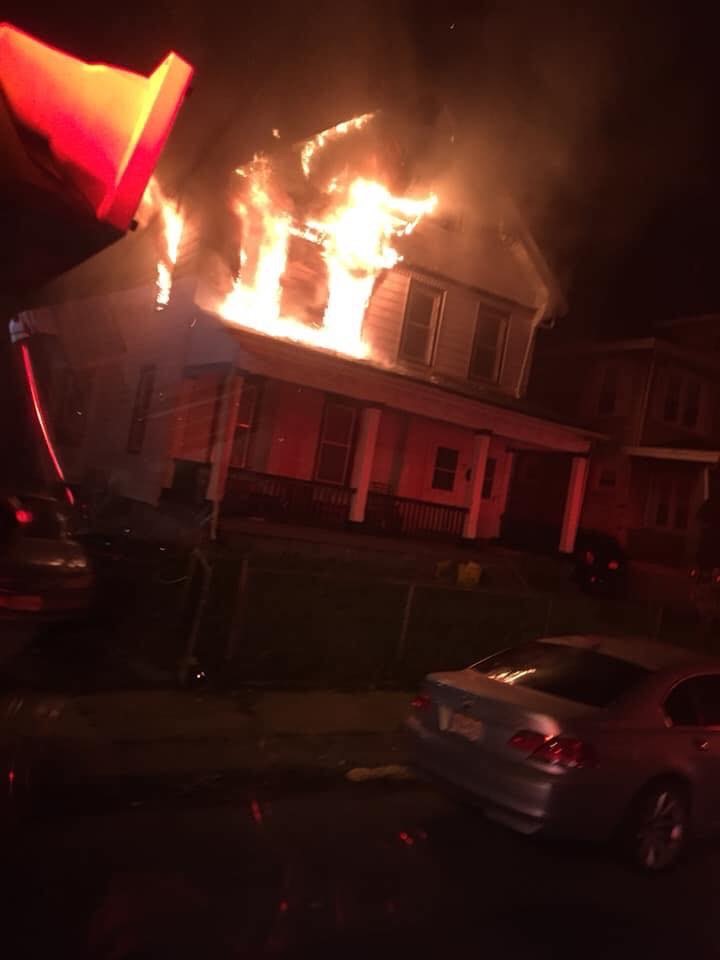 These are the things we must consider:
These are the things we must consider:
Apparatus Placement (Engine, Truck)
Where’s the access? (Engine)
How many sections? (Engine)
Fog or smoothbore? (Engine)
Ground ladder or aerial? (Truck)
Any obstructions present? (Truck)
Proper radio channel? (very important for everyone!)
Is there anyone out front on arrival that can answer that first question, “is there anyone inside?”
A mother acting hysterical in a bathrobe pleading with you to get her 3 kids out of the attic is probably not exaggerating. A mother-in-law in the basement apartment with a second-floor fire is a lot safer than 3 kids in an attic above. The on-approach interview can be so valuable.
Life is the number one priority and with good evidence of entrapment it’s time to make decisions based on conditions and manpower. Consider that you may be arriving with just an engine or truck and working alone for a few minutes, and plan in accordance.
 There are many variations of the half story living space in a wood frame home as far as windows, dormers, finished or unfinished attics, and those may factor into fire conditions, ventilation and egress to name a few. Also, the entire structure is combustible. Another factor is the presence or absence of smoke detectors. Even if they are present and working are, they placed at the bottom of the stairs or the top? Often, they are placed at the bottom causing a delayed alarm.
There are many variations of the half story living space in a wood frame home as far as windows, dormers, finished or unfinished attics, and those may factor into fire conditions, ventilation and egress to name a few. Also, the entire structure is combustible. Another factor is the presence or absence of smoke detectors. Even if they are present and working are, they placed at the bottom of the stairs or the top? Often, they are placed at the bottom causing a delayed alarm.
Consider the fire load in a “sleeping” area. A smoking mattress alone is enough to kill everyone in the loft but consider the fire BELOW on the second floor that usually has 2-3 bedrooms and a hallway. That smoke and fire is heading north right to the interior stairs leading to the half story living space, the attic above. The door on the second-floor landing leading to that sleeping area may be closed buying them some time. But it’s not a fire rated door and will burn through quickly.
There are usually two ways out of a burning attic, the interior stairs or the window(s). Consider the stairs may be compromised with fire and smoke making it impossible to descend. The other option is out the window which is 2.5 stories above ground level.
Hopefully for those in the attic, the fire department response is quick and a ladder is placed to that window while simultaneously attacking the fire below and sending a member above to search for life. This can all be done with 5-6 firefighters, but there are situations when apparatus and manpower won’t be enough. We should always train for these situations BEFORE they occur. I like to call it “event-forecasting” and it’s a great kitchen table or drill night discussion for any department. Whether you’re the first arriving engine with a ladder that won’t reach or the first arriving truck with no water (outside the can) we must improvise, adapt and overcome, especially during a rapid rescue situation with kids in the attic.
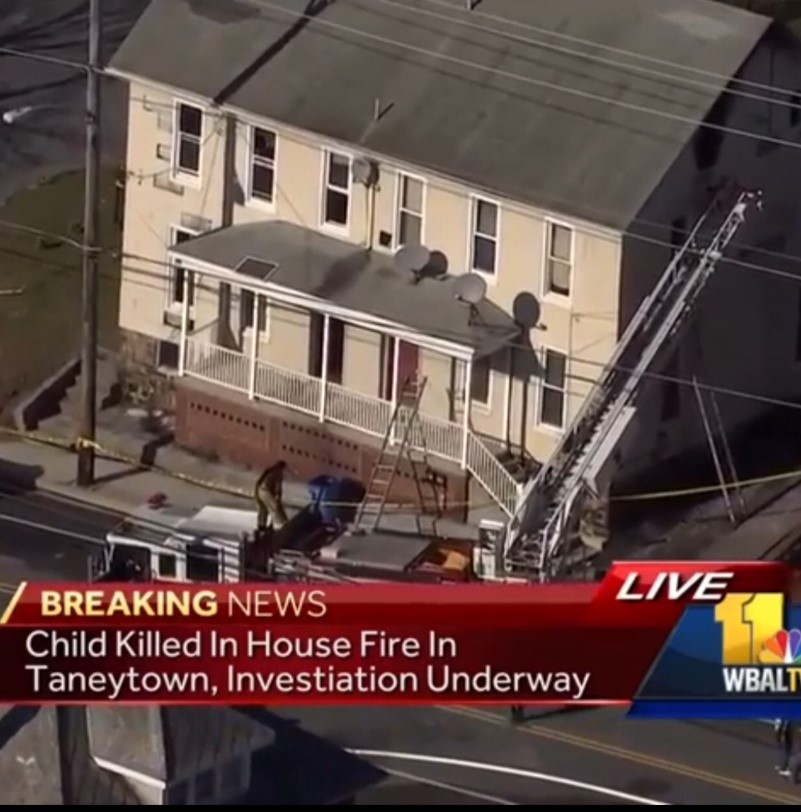
Some things to remember:
Many 24’ and 28’ ground ladders will reach attic windowsills and balconies where they need to be placed for rescue even if the angle has to be adjusted to “improper.” I assure you the victims won’t complain.
Start attacking the with tank water. With 500+ gallons, water supply is often never needed for 3 rooms and a hallway and there’s very limited time to make a grab in the 2.5 frame.
There is no “I” in VES for the 2.5 frame as the door to isolate is at the BOTTOM of the stairs on floor below and that would be counterproductive to enter the area of search and pass any potential victims to go down the stairs, close the door, and come back up to search.
Use that mind-triggering and think about the kids above anytime there’s fire below the attic in the 2.5 frame.
Author: Brian Butler @urbanfiretraining

